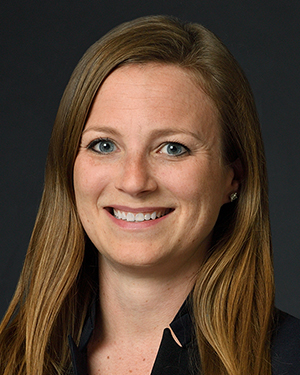DWS Group is among a growing list of asset managers that is making a bigger push to capture more business from accredited investors. The firm is making a new strategic investment in the firm’s Americas Alternatives distribution platform to make its real estate products more widely available to the retail market.
DWS is paying more attention to retail channels for good reason. As of December 31, retail investors made up roughly one-third of DWS’ liquid real assets business–roughly $12.24 billion of its $36 billion in total assets. In fact, the majority of the inflows in 2021 for the asset manager came from retail investors through its DWS RREEF Real Assets Fund. DWS describes its growing focus on retail channels as a “natural progression” for the firm’s Alternatives group, which also aligns with the broader shift taking place in the industry to provide alternative strategies to the everyday investor.
DWS is one of the world's leading asset managers with $1.05 trillion of assets under management (as of Dec. 31, 2021). WMRE recently talked with Anne-Marie Vandenberg, CEO of RREEF Property Trust to hear more about the firm’s strategy and the growing significance of retail investors within its investment platforms.
This interview has been edited for style, length and clarity.
WMRE: Anecdotally, we hear about a growing appetite for real estate investment alternatives from retail investors. What is your view of that individual investor and what they are looking to achieve with real estate allocations, and what do you think is the market potential for growth?
 Anne-Marie Vandenberg: We’ve seen the capital from the retail channel into direct real estate grow year-over-year, and the expectation is that there is still quite a bit of runway from a capital formation perspective. The individual investors want to have access to the same type of investment solutions as institutional investors. You can see that institutional investors actually outperform on a risk-adjusted basis, because they have had longer term access to less liquid alternative investment vehicles, which have generated lower volatility and better returns.
Anne-Marie Vandenberg: We’ve seen the capital from the retail channel into direct real estate grow year-over-year, and the expectation is that there is still quite a bit of runway from a capital formation perspective. The individual investors want to have access to the same type of investment solutions as institutional investors. You can see that institutional investors actually outperform on a risk-adjusted basis, because they have had longer term access to less liquid alternative investment vehicles, which have generated lower volatility and better returns.
The most sophisticated advisors are working with their clients to help educate them on the benefits of real estate and alternatives, and we’re going to continue to see best-in-class sponsors move into the space and offer these types of solutions that will, hopefully, allow individual investors to have those same risk-adjusted returns that institutional investors have seen for years.
WMRE: What were some of the motivating factors behind this strategic investment into your alternative distribution platform and a bigger push to reach the retail investor?
Anne-Marie Vandenberg: As capital has come into direct real estate there is really a blurring of lines between institutional and retail. When we initially launched RREEF Property Trust in 2013, we wanted to make sure there was an access point for individual investors to come into our real estate programs. Our institutional funds tend to have a $5 million minimum. We often get inquiries on high-net-worth investors coming in at a lower minimum, and we didn’t have the right vehicle for them. So, we made the decision to launch our first open-ended non-traded REIT 2.0, if you will, structures utilizing our institutional platform and a fiduciary mindset to give access to individual investors at a lower access point.
WMRE: Can you describe what the strategic investment in your alternatives distribution platform entails?
Anne-Marie Vandenberg: Generally speaking, we’re looking to hire a dedicated team for the alternatives wealth management channel. RREEF DWS has invested for institutional investors since the late 1970s, but our focus historically for our broad alternatives offerings has been on the institutional channel. RREEF Property Trust is an SEC-registered, non-traded REIT that launched in 2013. It was our first product for alternatives within the wealth management channel.
We have been utilizing our generalist coverage team in wealth management to raise awareness of this real estate offering. DWS has made the decision to hire a dedicated team for the alternatives wealth management channel so that we can create access points to all of our alternatives offerings to supplement what we’ve been doing on the institutional side. We’re hiring 15 additional people, and we’ve also moved around some people internally to come up with this dedicated team to help raise awareness of our legacy RREEF products under the DWS flag in the wealth management channel.
WMRE: What’s your strategy for growing that awareness?
Anne-Marie Vandenberg: We will focus on the broker-dealers, RIAs, wirehouses and perhaps family offices depending on the products, as well as some smaller DB (defined benefit) clients who might find an appropriate access point through this channel where they can’t meet the minimums on the institutional side.
WMRE: Who is your target audience for individual investors—accredited investors, HNWIs or does it include the average investor more broadly?
Anne-Marie Vandenberg: RREEF Property Trust has a very low minimum of $2,500 and is accessible for what would be considered your Main Street investor. The actual investment criteria is what we call “accredited light,” which is $250,000 in net worth or $70,000 in net worth and $70,000 in annual income. As we build out the product offerings for the broader alts platform, some of them may still be qualified purchasers, because there are going to be private funds and have a higher minimum, likely $250,000. But RREEF Property Trust is available for your Main Street investor with a $2,500 minimum.
WMRE: What are the products specifically? Are you planning future additions, and will these be private equity funds or other products?
Anne-Marie Vandenberg: Today, the offering that exists is RREEF Property Trust, which gives investors access to direct bricks and mortar real estate. The future offerings will be leveraging our broader alternatives platform, which is more in a closed-end fund series that tends to look more like private equity funds, that are investing in infrastructure, debt and equity, true private equity, private credit and sustainable investments.
WMRE: What’s the main investment focus of RREEF Property Trust?
Anne-Marie Vandenberg: It’s diversified across the four main food groups—office, industrial, multifamily and retail. In order to make the fund appropriate for individual investors, we want to make sure there is adequate liquidity for investors to come in and out. Our fund allows investors to come in and out on a daily basis, although there is of course limitations on that liquidity feature. In order to do that and allow the daily inflows and outflows, we invest 80 percent into properties, direct bricks and mortar real estate, and 20 percent into an actively managed, publicly-traded REIT sleeve.
WMRE: Aside from risk-adjusted returns, what other expectations are individual investors looking to achieve from their real estate investments?
Anne-Marie Vandenberg: What is interesting is that the newer vintage strategies here on the real estate side have very income-focused strategies. But if you look at who participates in the dividend reinvestment program, the percentage of investors who participate is quite high—usually above 50 percent. That says to me that many investors are not actually living off of the income coming off of these vehicles. That said, the income profile of these vehicles helps with the stability of the total return in certain marketplaces. So, income is certainly a focus of these products, as well as lower volatility returns, lower correlation, and right now, we’re also talking a lot about inflation and how real estate can be a good hedge against inflation.
Core real estate has historically been viewed as a bond substitute within an investor’s portfolio. Right now, we are seeing bond rates go up, and they could go up above the yields that core real estate can deliver. However, there is still an appreciation component to core real estate that you’re not going to get with a bond. When you get that money back in 10 years on a bond, the purchasing power of that principle could be less than when you bought that investment, despite an equal or higher yield versus real estate that is going to continue to have a potential for appreciation.
Real estate has historically been a good hedge against inflation, because the cash flows have an opportunity to grow as you mark-to-market rents, as well as through contractual lease bumps within the portfolio. In addition to that, real estate tends to trend on a valuation perspective to replacement cost. So, as the cost of hard materials has increased, and cost of land and labor have increased, that also flows through to the replacement cost and therefore the value of these properties contributing to that appreciation component of the total return.
WMRE: Are there any particular strategies or property types that resonate with retail investors, which may influence new products for you going forward?
Anne-Marie Vandenberg: Our strategy is diversified across the four sectors, which allows us to make the sector allocation given what’s going on in the market. So, we can pivot up and down throughout those four main food groups of office, industrial, multifamily and retail. Right now, the market has big expectations for industrial and multifamily. So, not surprising, many real estate investors are overweight to those two sectors. From a future offering perspective, there is still a search for yield that is going to potentially continue, which is going to lead to greater adoption of private credit or real estate credit solutions that have strong income and current pay profiles.
WMRE: When you reach out to that retail investor audience, do they have different expectations that impact your strategies for communicating with them?
Anne-Marie Vandenberg: You certainly have to be prepared for a broader range of conversations around real estate. When you go into an institutional conversation, in most cases, you are talking to a CIO or head of real estate at a pension where all they do is specialize in real estate. Communicating the value proposition to a financial advisor who is working across a broad suite of offerings and trying to pick the right mix of stocks, bonds and alternatives for their individual clients is a different type of conversation. Ultimately, the goal is the same—to make sure that the advisor or the institutional investor understands the investment strategy, understands the pros and cons of that investment strategy, including the limitations around liquidity, which is really an important piece of communication for individual investors.
WMRE: CRE companies ranging from PE firms to public REITs seem to be increasingly chasing that retail customer. How competitive is that space, and how is DWS setting itself apart and getting in front of that retail audience?
Anne-Marie Vandenberg: There are many sponsors coming into the space every day and increasing competition for an advisor’s or investor’s attention. At the end of the day, what we control is our performance and holding ourselves accountable to that performance. So, we’re not looking to be asset aggregators, we’re looking to deliver superior risk-adjusted returns against our benchmark for investors. That’s the way that we have historically differentiated ourselves since the late 1970s when RREEF launched, and that’s the way that we will continue to differentiate ourselves as we’re competing for attention and shelf space within the retail channel.





